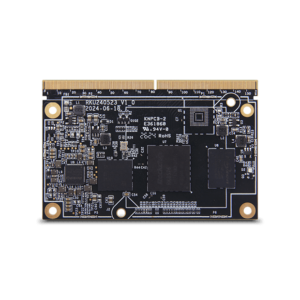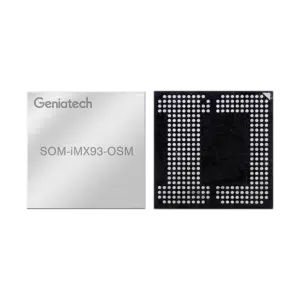Understanding System on Module (SoM) and Its Applications in Embedded Systems
Understanding System on Module (SoM) and Its Applications in Embedded Systems
Blog Article
The rapid progress of engineering has driven substantial innovations in stuck techniques, one of that will be the system on module design Acting as a link between custom electronics and off-the-shelf adventures, the SoM is redefining how designers strategy stuck system design. This website highlights the fundamental comprehension of a Program on Component and its rising applications in several industries.

What is a System on Component (SoM)?
A Program on Element (SoM) is just a compact, ready-to-use board that integrates most of the primary aspects of something on a single module. This generally contains the processor, memory, energy administration devices, and sometimes additional peripherals like Wi-Fi or Ethernet. Unlike a conventional single-board pc, an SoM does not include connectors and interface locations pre-installed, meaning it should be combined with a provider panel to make a complete system.
Built to improve progress workflows, the modular nature of an SoM enables designers to miss the elaborate means of planning and building every individual component from scratch. By adopting an SoM, businesses can concentrate more on the application-specific functions of these products.
Features of Using Program on Module
The integration of an entire process on a singular component gift suggestions many benefits. First, it drastically reduces the full time necessary for product development. Pre-tested segments ensure balance, saving months of benefit executive teams.
Also, the scalability of an SoM allows companies to modify performance levels based on project requirements. As an example, a low-cost option can simply scale in to a high-end solution by replacing the model in the element while preserving the provider panel design. This method reduces design risks while selling long-term cost-efficiency.
Lastly, the reliability of an off-the-shelf module ensures high compatibility with current instruments and frameworks, which makes it suitable for both small startups and big enterprises looking to to enter the market quickly.
Important Purposes of SoM in Embedded Systems
The usage of Program on Segments spans several high-demand industries including however, not limited to medical products, automation, and client electronics.
Medical Products
Precision and reliability are paramount in healthcare. System on Adventures with secure running features are embedded in displays, imaging devices, and portable diagnostic tools.
Commercial Automation
Effective and energy-efficient, an SoM is a must for professional get a grip on programs and autonomous robotics. Their scalable architecture supports high-speed knowledge processing and IoT connectivity.
IoT Devices

Consumer products like intelligent thermostats, wearable units, and even home assistants integrate an ultra-compact Program on Component for seamless performance.
The System on Component continues to achieve footing because paid off difficulty and flexibility, cementing itself as a future-proof answer in the embedded systems sphere. Industry leaders already are leveraging these adventures, and their range is likely to increase even further as engineering evolves.
Report this page